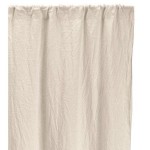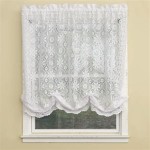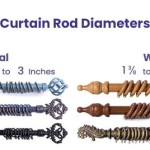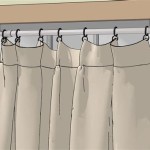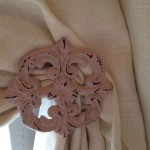Adhesive Ceiling Hooks For Curtains: A Comprehensive Guide
Adhesive ceiling hooks designed for curtain hanging offer a damage-free and often simpler alternative to traditional drilling and hardware installation. These hooks rely on specialized adhesive technology to securely attach to the ceiling, providing a mounting point for curtain rods or directly supporting lightweight curtains. This article will delve into the various aspects of adhesive ceiling hooks for curtains, covering their types, advantages, limitations, installation process, weight capacity considerations, and removal methods, offering a comprehensive understanding for potential users.
The market offers a diverse range of adhesive ceiling hooks specifically engineered for curtain hanging. These hooks differ in their design, adhesive composition, weight capacity, and intended use. Understanding these distinctions is crucial for selecting the optimal hook for a specific curtain hanging project. Some hooks are crafted from plastic, while others are constructed from metal, impacting their durability and aesthetic appeal. The adhesive component may be a pre-applied strip, a separate gel or paste, or a suction-based mechanism. The choice of adhesive technology directly affects the hook's holding power and suitability for different ceiling surfaces.
Furthermore, the design of the hook itself varies significantly. Some hooks are designed to directly hold curtain rods, featuring a curved or angled shape to accommodate the rod's diameter. Others are intended to support lightweight curtains directly via loops or clips. Still others are designed to be used with curtain wires which in turn will support the curtain. The desired curtain hanging style and the weight of the curtain are key determinants in choosing the appropriate hook design. Consideration should also be given to the visual aesthetic; some hooks are designed to be virtually invisible, while others offer a more decorative element to complement the overall room decor.
Advantages of Using Adhesive Ceiling Hooks
Adhesive ceiling hooks for curtains offer several compelling advantages, making them a popular choice for many homeowners and renters. The primary benefit is the elimination of drilling, preventing damage to the ceiling surface. This is particularly advantageous in rental properties where permanent alterations are often prohibited or require prior approval from the landlord. The ease of installation is another significant advantage. Unlike traditional curtain rod mounting, which often requires specialized tools and expertise, adhesive hooks can be applied quickly and easily, typically without the need for any tools beyond a cleaning cloth.
The repositionability, in some cases, is another considerable advantage. Some adhesive hooks, especially those employing certain adhesive technologies, can be removed and repositioned without damaging the ceiling or leaving behind residue. This allows for greater flexibility in adjusting the curtain placement or experimenting with different hanging styles. This feature is particularly useful for those who frequently redecorate or like to change their curtains seasonally. Finally, the cost-effectiveness of adhesive hooks is also a major draw. They are generally less expensive than traditional curtain rod mounting hardware, making them an attractive option for budget-conscious consumers.
The ease with which adhesive hooks can be employed makes them useful for temporary solutions around rooms and in unique places. For example, people sometimes hang tapestries across a room or at a workplace to create the impression of privacy where none exists. In these situations, because adhesive hooks are easily removable, they make a good temporary solution.
Limitations to Consider
Despite their numerous advantages, adhesive ceiling hooks for curtains also have limitations that must be carefully considered. The most significant limitation is their weight capacity. Adhesive hooks are generally not suitable for hanging heavy curtains or drapes. Overloading the hook can lead to adhesive failure, resulting in the curtain falling and potentially causing damage. It is crucial to carefully check the manufacturer's stated weight capacity for each hook and ensure that it is sufficient for the weight of the curtain being hung.
Another limitation is their suitability for certain ceiling surfaces. Not all adhesive hooks adhere equally well to all types of ceilings. Textured ceilings, such as popcorn ceilings, and ceilings with peeling paint or loose wallpaper may not provide a stable surface for the adhesive to bond to. In such cases, the adhesive may fail prematurely, leading to the hook detaching from the ceiling. It is essential to assess the condition and texture of the ceiling surface before applying adhesive hooks and to choose hooks specifically designed for the type of ceiling being used.
Furthermore, the long-term durability of adhesive hooks can be a concern. Over time, the adhesive may degrade due to factors such as temperature fluctuations, humidity, and exposure to sunlight. This can lead to a gradual weakening of the bond and an increased risk of the hook detaching from the ceiling. Regular inspection of the hooks is recommended to identify any signs of adhesive degradation and to replace the hooks as needed. Finally, the aesthetic appeal of adhesive hooks may be a limitation for some users. While some hooks are designed to be discreet, they are often still visible, particularly when viewed up close. This may be a concern for those seeking a more seamless and integrated look.
Installation and Removal Process
The installation of adhesive ceiling hooks for curtains is generally straightforward, but following the manufacturer's instructions carefully is crucial for ensuring a secure and long-lasting bond. The first step is to clean the ceiling surface thoroughly using a clean cloth and rubbing alcohol. This removes any dust, dirt, or grease that may interfere with the adhesive bond. Allow the surface to dry completely before proceeding.
Next, carefully peel off the backing from the adhesive strip or apply the adhesive gel or paste, as directed by the manufacturer. Position the hook on the ceiling at the desired location and press firmly for the recommended duration. This ensures that the adhesive makes full contact with the ceiling surface. Avoid touching the adhesive surface with your fingers, as this can transfer oils that may weaken the bond. Allow the adhesive to cure for the recommended time, typically 24 to 48 hours, before hanging the curtain. This allows the adhesive to fully set and achieve maximum holding power.
The removal of adhesive ceiling hooks should also be done carefully to avoid damaging the ceiling surface. The method of removal depends on the type of adhesive used. Some hooks can be removed by gently pulling them straight down or twisting them slightly. Others may require the use of a hairdryer to soften the adhesive before removal. Point the hairdryer at the adhesive area for a few minutes, then gently peel the hook away from the ceiling. If any adhesive residue remains on the ceiling, it can typically be removed with rubbing alcohol or a specialized adhesive remover. Apply the remover to a clean cloth and gently rub the residue until it is gone. Avoid using harsh chemicals or abrasive cleaners, as these can damage the ceiling paint or finish.
Because there are many different types of adhesives available, it is worth trying different adhesives for difficult to adhere surfaces. For example, some adhesives will be too strong and remove paint when removing them. In these situations, weaker adhesives like tape or those that are designed to be removed after a period of time are worth considering.
Overall, adhesive ceiling hooks for curtains offer a convenient and damage-free solution for hanging curtains. By carefully considering their advantages, limitations, installation process, weight capacity, and removal methods, users can make informed decisions and achieve successful curtain hanging projects. Proper installation according to the manufacturer's instructions is crucial for ensuring a secure and long-lasting bond. Regular inspection of the hooks is recommended to identify any signs of adhesive degradation and to replace the hooks as needed. With proper care and maintenance, adhesive ceiling hooks can provide a reliable and aesthetically pleasing way to hang curtains without damaging the ceiling surface.

Eease Ceiling Curtain Rod Hooks 10 Adhesive Holders Wal Com

Hanging Curtains From The Ceiling Home

Hanging Curtains From The Ceiling Home

How To Hang Curtains Using Command Hooks The Happier Homemaker

12 Pcs Hanging Rod Clip Shower Curtin Hooks Ceiling Hook Curtain Fixing Adhesive Holder

Hemoton White Adhesive Hooks For Home Use Sturdy And Reliable Plastic Set Of 8

Adhesive Curtain Hooks 360 Rotatable Ceiling Heavy Duty Wall 10 Pcs Self Set

2 Pack Adhesive Hook Clamp Down On For Bathroom Wall Curtain And Shower Curves Multi Purpose Hanging Rod Rack With Fixed Clip From Melome 78 Dhgate Com

How To Hang Curtains In A Dorm

Vevor 9 Ft Ceiling Curtain Track Set Self Adhesive Room Divider White


